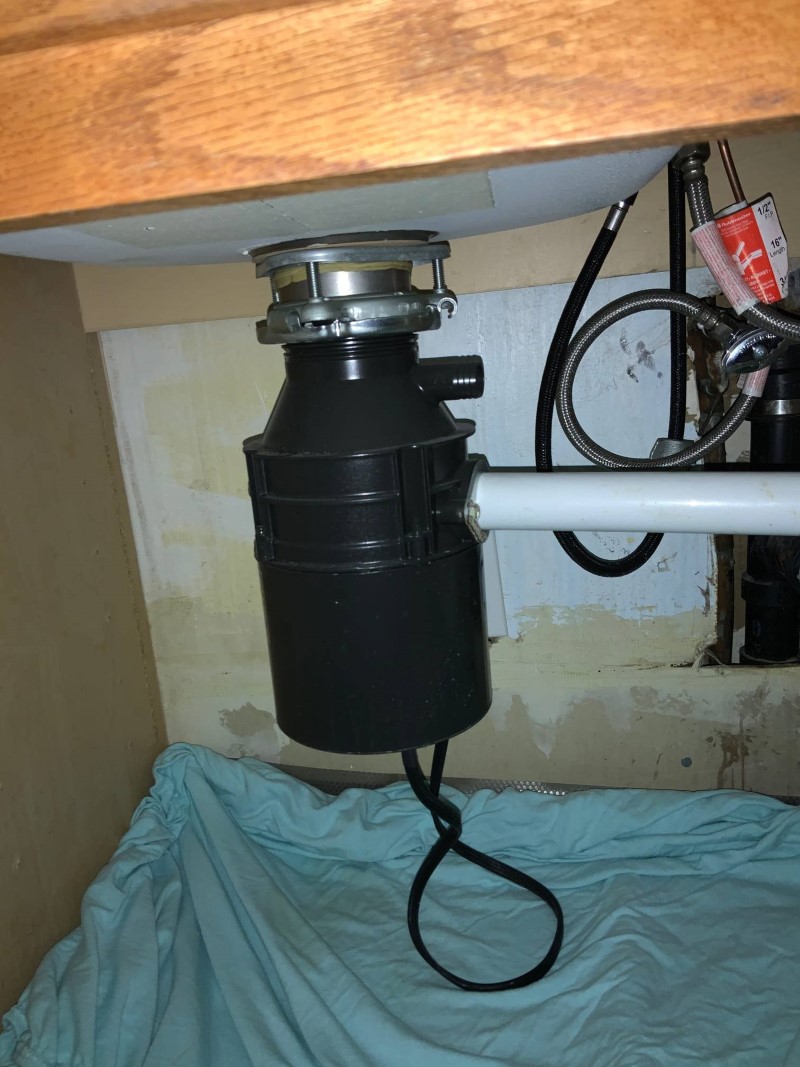Swift Fixes for a Dripping Garbage Disposal
Swift Fixes for a Dripping Garbage Disposal
Blog Article
We've encountered this post involving Why Is My Garbage Disposal Leaking From the Bottom? down the page on the web and concluded it made perfect sense to discuss it with you on this site.

Waste disposal unit are crucial kitchen area devices that aid in throwing away food waste successfully. Nonetheless, a dripping garbage disposal can be a discouraging and untidy problem to deal with. The good news is, several leakages can be fixed quickly with a few simple actions. In this post, we will certainly go over how to deal with a leaking waste disposal unit efficiently.
Intro
Waste disposal unit are installed under kitchen area sinks and are made to shred food waste right into smaller items, permitting it to travel through the pipes system quickly. While these tools are typically trustworthy, leakages can take place over time as a result of wear and tear, loose connections, or damages to the unit.
Usual Reasons For Leakages in Waste Disposals
Worn Seals and Gaskets
Seals and gaskets play a crucial duty in preventing water from leaking out of the waste disposal unit. With time, these elements can wear away, bring about leakages around the disposal unit.
Loose Connections
The connections between the garbage disposal and the pipes system can end up being loose with time, triggering water to leakage out throughout procedure.
Fractures or Holes in the Disposal Unit
Physical damage to the garbage disposal, such as cracks or openings in the housing, can likewise cause leakages.
Determining the Resource of the Leakage
Before trying to take care of a leaking waste disposal unit, it is essential to identify the source of the leak. This can typically be done with aesthetic examination or by conducting simple tests.
Visual Evaluation
Examine the waste disposal unit device meticulously for any type of signs of water leakage. Pay attention to areas around seals, gaskets, and connection factors.
Evaluating for Leaks
One method to test for leaks is by running water through the disposal device and looking for any kind of noticeable indicators of leak.
Devices and Materials Needed for Taking Care Of a Dripping Garbage Disposal
Before beginning the repair work process, collect the essential tools and products, consisting of a screwdriver, adjustable wrench, plumbing technician's putty, replacement seals or gaskets, and epoxy or patching material for repairing fractures or openings.
Step-by-Step Overview to Fixing a Leaking Garbage Disposal
Shut off the Power
Prior to attempting any kind of repair services, make certain that the power to the garbage disposal device is shut off to stop the threat of electric shock.
Find the Leak
Identify the exact place of the leak and determine the cause.
Tighten up Connections
Use a wrench to tighten any type of loose connections between the disposal unit and the pipes system.
Change Seals or Gaskets
If the leak is due to worn seals or gaskets, get rid of the old parts and change them with new ones.
Patching Splits or Holes
For splits or holes in the disposal unit, use epoxy or an appropriate patching material to secure the damaged location.
Checking the Waste Disposal Unit After Repair
When the repair work is full, check the garbage disposal by running water via it to ensure that the leak has been dealt with.
Preventive Maintenance Tips to Prevent Future Leakages
To prevent future leakages, it is necessary to do routine maintenance on your garbage disposal. This includes keeping it clean, avoiding putting non-food products or hard items down the disposal, and periodically checking for leakages or various other concerns.
Conclusion
To conclude, taking care of a leaking waste disposal unit is a fairly straightforward process that can be finished with standard devices and products. By complying with the steps described in this post and practicing preventive upkeep, you can maintain your waste disposal unit in good working problem and stay clear of expensive fixings in the future.
What to Do About a Leaking Garbage Disposal
A leaking garbage disposal often goes unnoticed until you confront a sopping cabinet, a foul-smelling puddle, or an audible drip-drip-drip from the unit. The fix can be frustrating, too, because the leak can stem from a number of components in the system. Fortunately, with a little sleuthing, you can zero in on the leak and—depending on the exact location—stop the icky oozing and repair the component that caused it. Worst case scenario, if it turns out that the garbage disposal must be replaced, installing a new one is a reasonable do-it-yourself task for those with basic plumbing skills. Read on to keep the cash you’d otherwise hand over to a pro.
Prepare to find the leak
Prior to testing the garbage disposal for leaks, unplug it at the wall outlet and turn off the power from the breaker box to prevent electrical shock. Then insert a watertight sink stopper into your sink drain and wipe the unit dry with a clean cloth. In any handy container, mix a few drops of food coloring into a few cups of water, and pour the dyed water onto the sink stopper to help you locate the leak.
Investigate the source
the top, where the disposal meets the sink drain the side, where the dishwasher hose or main drain pipe connects to the disposal or the bottom of the unit Inspect each of these locations while gliding a light-colored rag over the unit; the dyed water will readily show on the rag and reveal the location of the leak. If a leak isn’t immediately apparent, remove the sink stopper and pour a few more cups of dyed water down the sink drain, then check for leaks again. Leaks near the top of the unit are more likely to show themselves while the sink is plugged, while side and bottom leaks are more noticeable while the sink is unplugged.
The metal sink flange that sits directly inside the sink drain is typically sealed around the top with plumber’s putty (a clay-like sealant) and then secured from under the sink with bolts. If the plumber’s putty deteriorates, or the bolts loosen, the flange can no longer form a watertight seal between the sink drain and the disposal—which could cause a leak at the top of the unit.
To reseal the leaky flange, you must first detach the garbage disposal. Start by loosening the screws securing the main drain pipe to the disposal, then loosen the screws in the metal clamp securing the dishwasher hose to the disposal and detach the drain pipe and dishwasher hose from the disposal. Loosen the screws in the mounting ring that connects the disposal to the metal mounting assembly beneath the sink, then pull down the disposal and carefully set it on a clean, dry surface. Loosen the bolts in the mounting assembly with a wrench, then pull down the mounting assembly and set it near the disposal.

Hopefully you enjoyed reading our topic about Why Is My Garbage Disposal Leaking From the Bottom?. Thanks so much for taking a few minutes to browse our article. Sharing is nice. One never knows, you may be helping someone out. I enjoy reading our article about Garbage Disposal Leaking From Bottom.
This Post Report this page